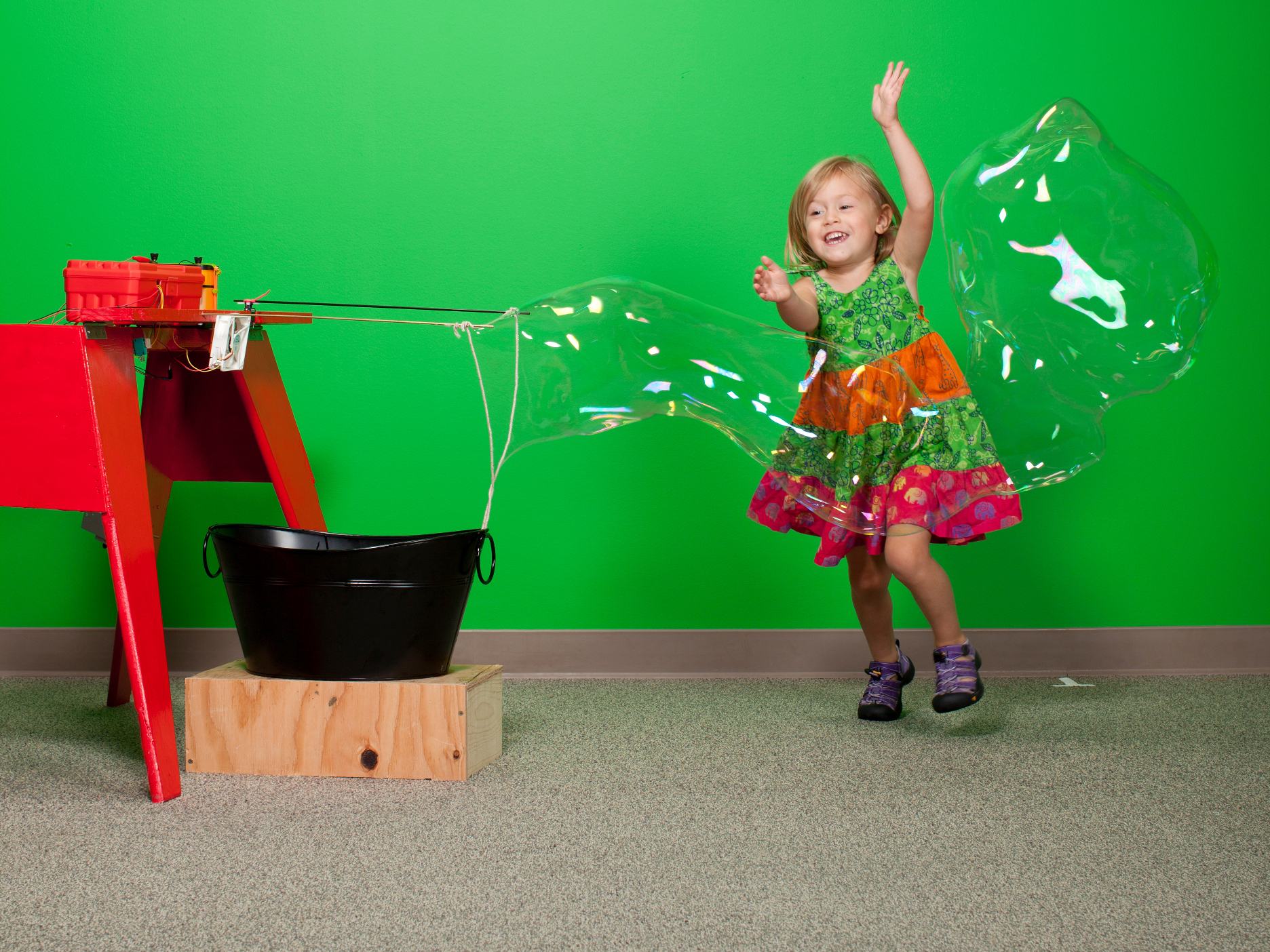When I read the Geekcon 2010 call for projects, I thought, what the hack — I’ll do it. Inspired by Julia Cameron’s The Artist’s Way, I decided to let creativity into my life, and start inventing things.
I watched Sterling Johnson’s magnificent “Giant Stinson Beach Bubbles” clip on YouTube, and when I described it to my neighbor Yuval, he suggested that I combine bubble-making with Arduino, which I had been playing with. Bam! That was all I needed. I submitted the Bubblebot project idea, and it was accepted to Geekcon, where I had the exciting experience of collaborating with all these bright people and watching the design manifest from their suggestions.
People typically blow giant bubbles through a loop of absorbent cord held between two sticks. On my Bubblebot, the sticks attach to a hinged shelf that a gearmotor tilts down and back up by reeling fishing line tied to a lever. After each dip, a servo spreads the sticks and a fan blows air through the loop.
Since Geekcon, I’ve built two more versions of the Bubblebot, written an Instructable about it, presented it at a local festival, and gotten many great responses to it from both adults and children. I’ve also learned that making gigantic soap bubbles under diverse wind and weather conditions requires a human touch and intuition that two motors and a fan can’t imitate consistently.
I recently added an arcade-style console for remote manual control. Whenever the Bubblebot is switched from automatic to manual mode, a siren sounds to alert everyone nearby that the bot will now be driven by a human rather than by a flawless microcontroller. You have to see people’s reactions when this happens.



